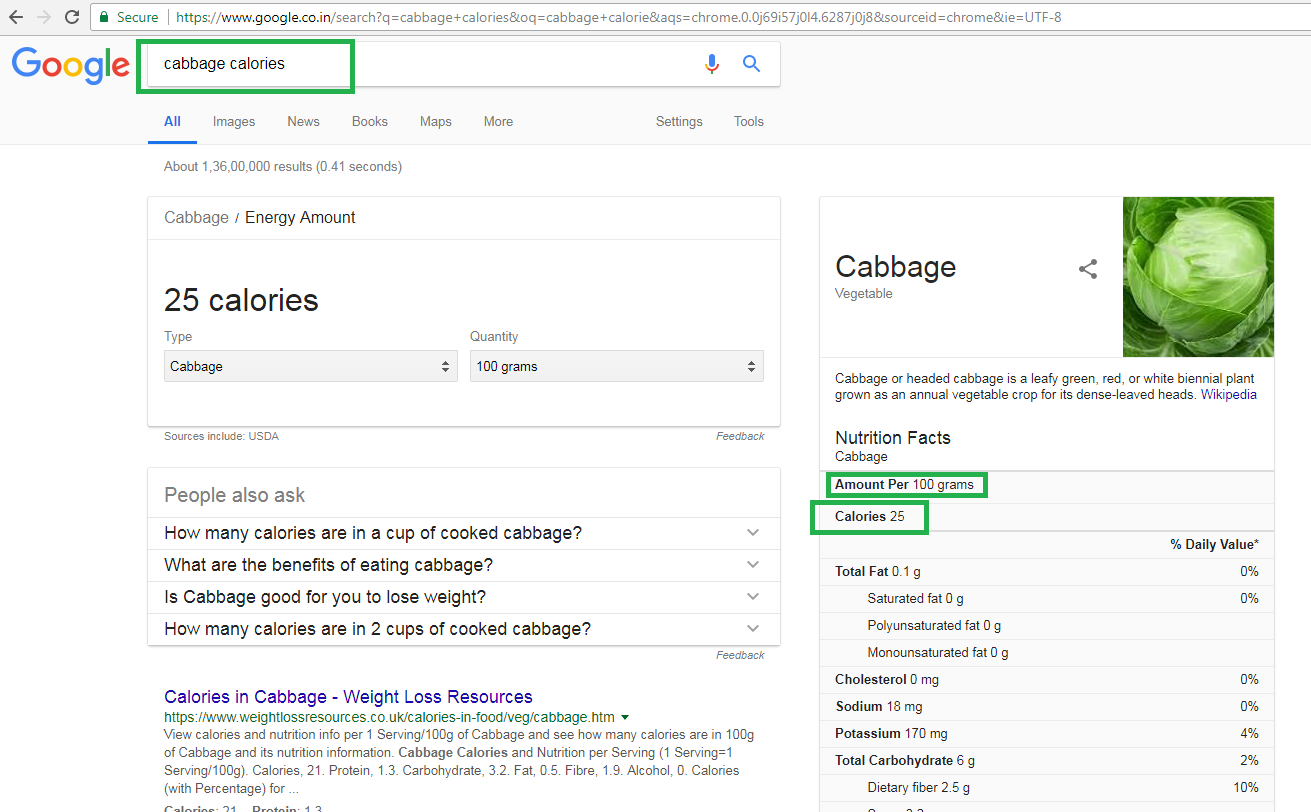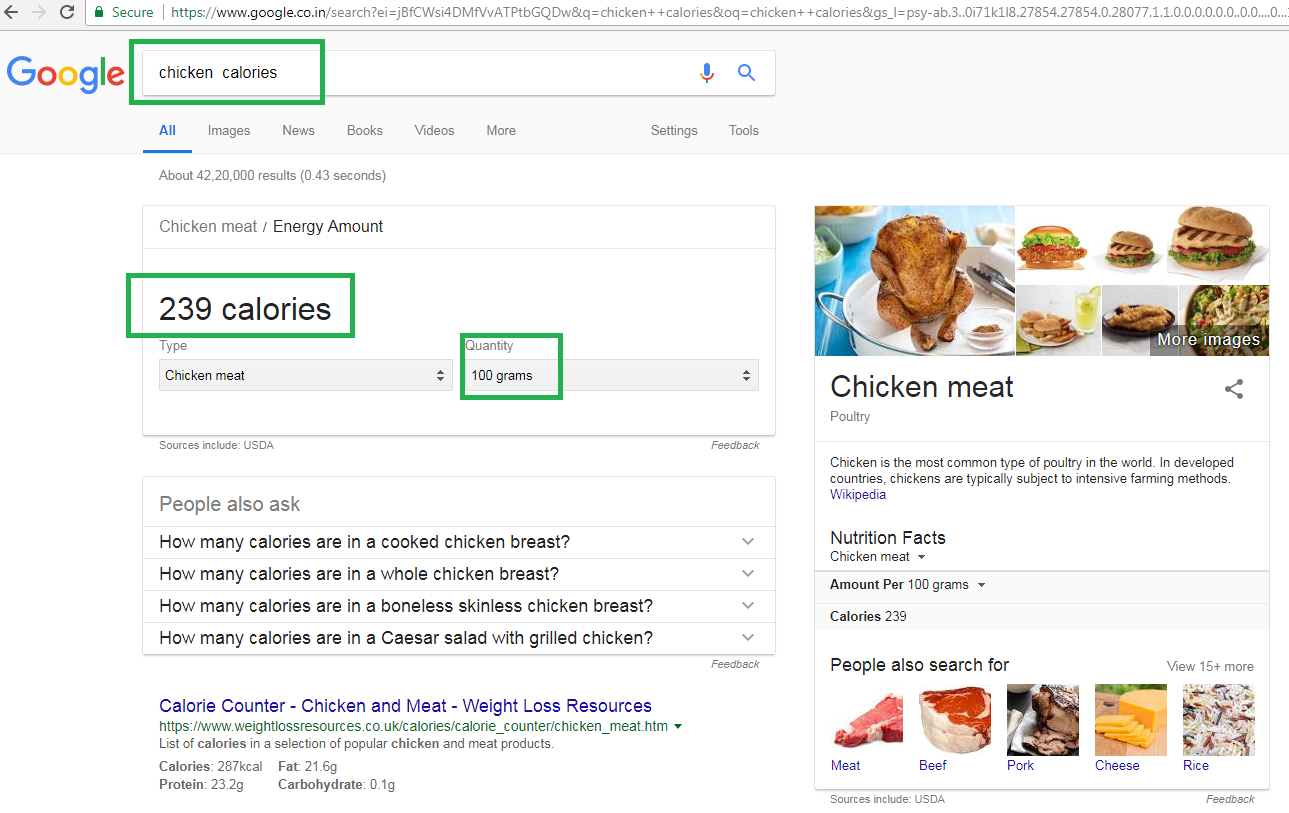How to calculate calories in food?
Take a recipe. Find the ingredients in it. Manually measure the ingredients. Find the calories in the ingredients and that’s it! Sounds simple, right? Just give it a try and you’ll come back looking for me to ____ 😉 But my friend that’s all you’ve to do and you are good to go. You’ll lose weight on autopilot.
I’ll motivate you to initially measure the calories by hand using the kitchen weighing scale and Uncle Google.
It is not just about the measurement. By doing it manually you engage different areas of the brain which fosters learning, understanding & retention. Compare it to writing vs typing. A new research found that writing has a congnitive edge over typing. Also, writing is theraputic. I found the same experience when I calculated calories manually instead of using the app. Of course, you would not have to do it this way forever. Everytime you measure an ingredient you will enter it into a master list that you’ll prepare for yourself. And in future, if an ingredient is repeated in a recipe, you do not measure it again but simply reference it from the master list. With time, this process will reduce drastically in time.
Measuring manually should make you feel more confident. We are doing this process in our kitchen and not in a laboratory. But I am trying to be as close to the metal as possible. Its only we who know exactly what ingridient we have used in a meal. By using ready-resources like apps or websites, we may not be very confident. Also, once we get the hang of the method we can play around with the ingridients. You will create variations of a recipe to suit your taste and still very easily maintain its nutrtional value. On a very serious note, I now add butter/ghee to most of my meals without any guilt 🙂
Once you have mastered the process of measuring calories & nutrition you will soon begin to look at food differently. It would seem like an invisible ability of yours to size up a food (quite literally ;)) for its nutritional value.I humorously call this “developing a sense of nutrition”
Some of my friends thought that having a small quantity of cake is healthier than a bowl of skimmed-milk curd as cake appears lighter than the curd. But when they measured the calories they understood they were wrong. Their initial sense for food was based on the weight of the food. Similarly, our perception for various kind of food is heavily skewed. When we measure food manually we begin to develop and strengthen our sense of nutrition. This sense helps us to look at food differently which helps us to make smarter food choices. Ane there my friend, you have got the key to maintain your desired weight for the rest of your life.
Fun fact: Once you have developed a sense for nutrition you may develop a natural liking for foods that you dislike today. It is like after you come to know of a particular quality of a person you start liking a person whom you disliked earlier. So, you may start to genuinely enjoy vegetables 😉
You should fall in love with the process of measuring calories manually. Imagine how it would feel if you knew what is you are doing is making you healthy every time you do it. It is a part of the more holistic process of being healthy. I would like you to believe that food is medicine. But unfortunately we dont really consume food the right way most of the times. We have calories in food but no nutrition.
Also, cooking is one of the ways I have found to get into the flow state. Counting exact calories is an immediate feedback to the brain. And knowing what I am eating is healthy is like the cherry on the cake.
Use google to mesure the calories in the food
Pre-requisites:
- Kitchen weighing scale. Buy on Amazon
Type the following in Google: “Food” Calories e.g Chicken Calories or Milk Calories or Cabbage Calories etc.
And Google would show you the calories contained in it per 100 grams.
Example 1: Finding the calories in Cabbage

Example 2: Finding the calories in Chicken

Avoid searches like “Dish_Name/Recipe_Name” Calories e.g. Roasted Chicken Calories or Green Salad Calories or Pasta Calories or Tea Calories or Chicken Tandoori Calories etc. Always calculate the calories in the recipe on your own. It is simple. Just note down the ingredients used in a recipe and find their individual calories on google. Then sum it up.
Watch the video below to better understand the process of counting calories. It is a simple vegetable egg soup recipe. The focus is on measuring calories than on making the soup 😉
Example:
Calculate the calories in Roasted Chicken.
Recipe ingredients:
500 grams Chicken – 1195 calorie. ( 100 grams = 239 calories)
100 gms Curd – 98 calorie (100 grams – 98 calores)
100 gms celery – 160 calorie (100 grams = 16 calories)
1 tbsp olive oil – 133 calories ( 100 grams olive oil = 884 calories; 1 tbsp = 15 grams)
Total Calories: 1586 calories.
Calculate the calories in Tea (with milk)
2 cups of water: 0 calories.
100 grams of milk: 42 calories.
5 grams (1 tsp) tea powder: 0.01 calorie. (100 grams = calories; 1 tsp = 5 grams)
20 grams (4 tsp) sugar: 38 calories. (100 grams = 387 calories; 1 tsp = 5 grams, 4 tsp = 20 grams)
10 grams (2 tsp) crushed ginger: 8 calorie. (100 grams = 80 calories; 1 tsp = 5 grams, 2 tsp = 10 grams)
Total Calories: 88 calories.
